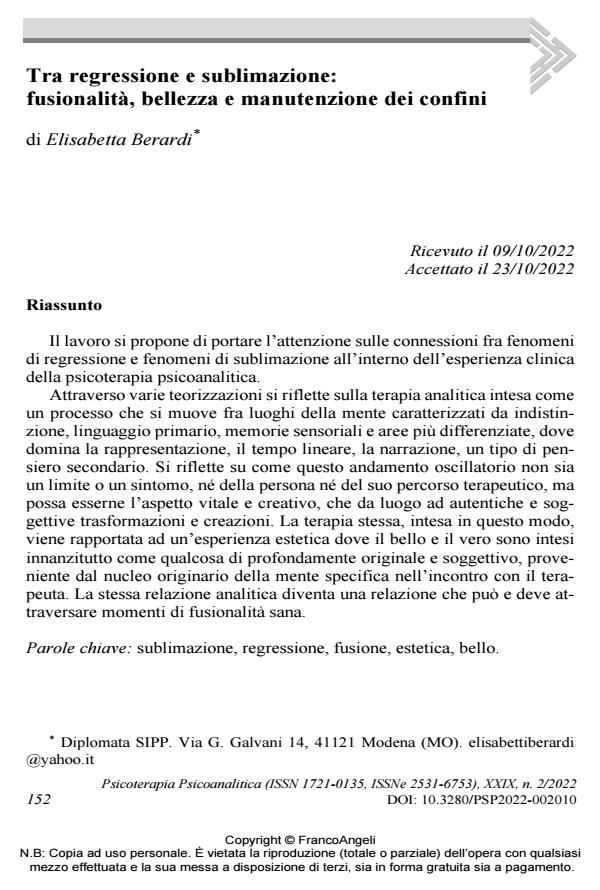Between regression and sublimation: fusionality, beauty and mainte-nance of the borders
Journal title PSICOTERAPIA PSICOANALITICA
Author/s Elisabetta Berardi
Publishing Year 2022 Issue 2022/2
Language Italian Pages 11 P. 152-162 File size 174 KB
DOI 10.3280/PSP2022-002010
DOI is like a bar code for intellectual property: to have more infomation
click here
Below, you can see the article first page
If you want to buy this article in PDF format, you can do it, following the instructions to buy download credits

FrancoAngeli is member of Publishers International Linking Association, Inc (PILA), a not-for-profit association which run the CrossRef service enabling links to and from online scholarly content.
The work aims to bring attention to the connections between regres-sion phenomena and sublimation phenomena within the clinical expe-rience of psychoanalytic psychotherapy. Through various theorizations we reflect on analytic therapy under-stood as a process that moves between places of the mind character-ized by indistinction, primary language, sensory memories and more differentiated areas, where representation, linear time, narration, a type of secondary thought dominate. It reflects on how this oscillatory trend is not a limit or a symptom, neither of the person nor of his therapeutic path, but it can be the vital and creative aspect, which gives rise to au-thentic and subjective transformations and creations. The therapy itself, understood in this way, is related to an aesthetic experience, where beauty and truth are understood above all as something deeply original and subjective coming from the original core of the specific mind in the encounter with the therapist. The analytic relationship itself becomes a relationship that can and must go through moments of healthy fusionality.
Keywords: sublimation, regression, fusion, aesthetics, beautiful
Elisabetta Berardi, Tra regressione e sublimazione: fusionalità, bellezza e manutenzione dei confini in "PSICOTERAPIA PSICOANALITICA" 2/2022, pp 152-162, DOI: 10.3280/PSP2022-002010